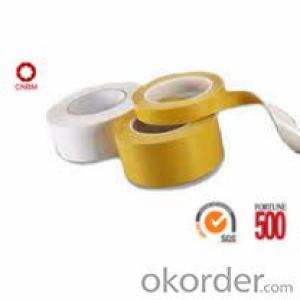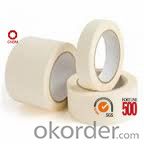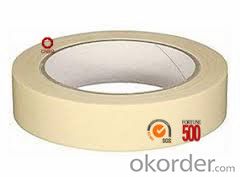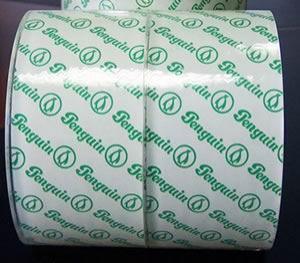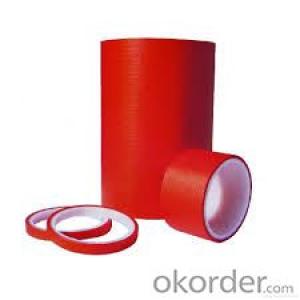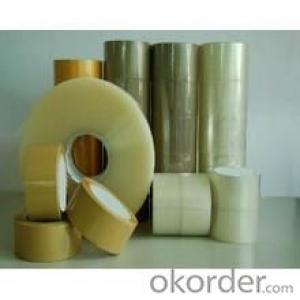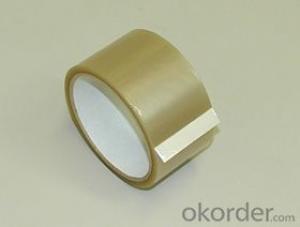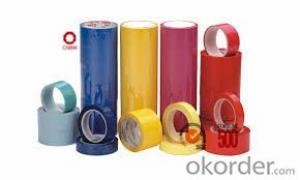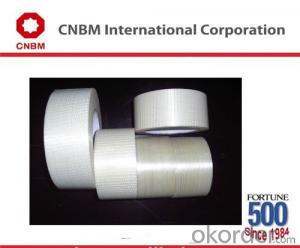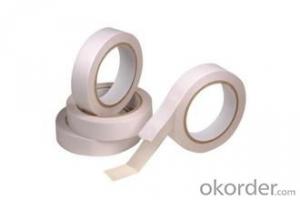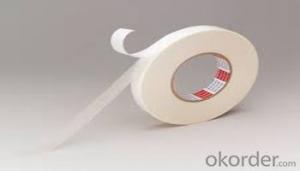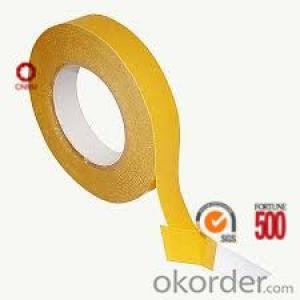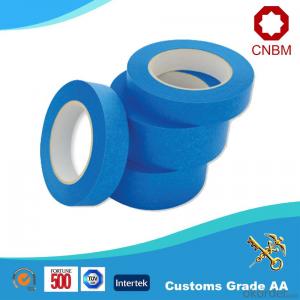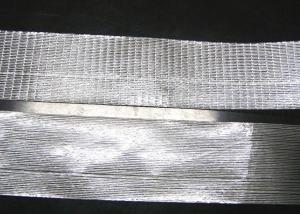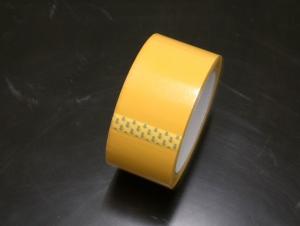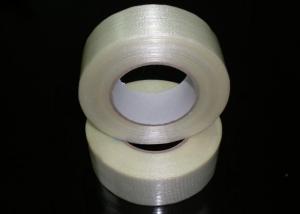Fun Packaging Tape - Double Sided Tissue Tape Micron Solvent Based Acrylic Customized
- Loading Port:
- Shanghai
- Payment Terms:
- TT OR LC
- Min Order Qty:
- 10000 m²
- Supply Capability:
- 20000000 m²/month
OKorder Service Pledge
OKorder Financial Service
You Might Also Like
Description
The Double Sided Tissue Tape is of tissue as the carrier, coating with hot melt adhesive, water based acrylic, solvent based acrylic. It is excellent in flame retardant, high temperature stability, and anti-aging. It provides well insulation to various products.
Packaging Detail:
Log Roll: Length 1000mm; width: 1050mm, 1260mm, 1040mm..
Cut Roll: As per customer’s requirements
The thickness of the tape can be customized.
Main Features of the Double Sided Tissue Tape
| Item No. | Adhesive | Thickness (micron) | Initial Tack (14#mm) | Holding Power(hour) | Adhesive to steel (N/25mm) | Temperatureresistance (DC) |
| DS-110H | solvent based acrylic | 110 | ≤120 | ≥2h | ≥17 | 60 |
General purpose of Double Sided Tissue Tape: widely used for bonding, fixing for leather, foam, sponge, garment, shoe, luggage, plastic, paper splicing and stationery.
Specifications
·World Top 500 Enterprises
·Resistance to cold, heat and aging
·Best quality and competitive price
·SGS&ISO9001

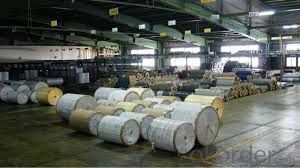
FAQ of Double Sided Tissue Tape
Q1. How about your company?
CNBM International Corporation (CNBM International) is a state-owned company and we have sound business relations with clients from over 120 countries. Currently, we have wholly-owned overseas subsidiaries and branches in 5 countries with a view to realize localization, which also represents an essential progress in our globalization target. We have over twenty years experiences.
Q2. What kind kind of service we can provide for you?
Sample of Double Sided Tissue Tape is available.
Your inquiry will be replied within 12 hours.
24 hours service
Well-trained & experienced sales representative are ready to answer you.
Q3. How long can you receive the product?
Within 7-15 working days after receiving your deposit
Welcome to contact us and visit the factory!
- Q: Does packaging tape come in different lengths?
- Yes, packaging tape does come in different lengths. It is available in various lengths to cater to different packaging needs and requirements.
- Q: Can packaging tape be used for sealing packages with heavy items?
- Yes, packaging tape can be used for sealing packages with heavy items. Packaging tape is specifically designed to provide strong adhesion and durability, making it suitable for securing packages containing heavy items. It is made from a strong material like polypropylene or acrylic, which ensures that it can withstand the weight and pressure of heavy items without easily tearing or coming loose. Additionally, packaging tape often has a strong adhesive backing that bonds well with various surfaces, ensuring a secure seal. However, it is important to choose the appropriate width and thickness of packaging tape to ensure proper sealing for heavy packages.
- Q: Can packaging tape be used for sealing automotive or vehicle parts?
- Packaging tape is not recommended for sealing automotive or vehicle parts. It is not designed to withstand the harsh conditions, high temperatures, and potential exposure to chemicals that automotive parts may encounter. It is best to use specialized tapes or adhesives that are specifically designed for automotive applications to ensure a proper and durable seal.
- Q: Can packaging tape be used for heavy boxes?
- Yes, packaging tape can be used for heavy boxes. It is designed to provide strong adhesion and secure heavy and bulky packages during transit.
- Q: What materials are commonly used for packaging tape?
- The most commonly used materials for packaging tape are polypropylene, PVC, and paper.
- Q: Does packaging tape have any specific certifications or standards?
- Packaging tape possesses specific certifications and standards. Various organizations and standards establish guidelines for packaging materials, including packaging tape. One of the most prevalent certifications for packaging tape is the ISO certification from the International Organization for Standardization. ISO establishes quality management system standards, and packaging tape can acquire certification under ISO 9001:2015 to ensure that it meets specific quality criteria. Apart from ISO certification, packaging tape can also conform to industry-specific standards like those set by ASTM International or European Union directives. ASTM International develops and publishes technical standards for a wide range of materials, including packaging tape. These standards guarantee that the tape satisfies particular requirements concerning strength, adhesion, and durability. Furthermore, certain packaging tapes may possess certifications associated with their environmental impact. For instance, specific tapes may be certified as recyclable, biodegradable, or made from sustainable materials. Organizations like the FSC or the SFI grant these certifications to promote responsible forestry practices. It is crucial to note that not all packaging tapes will possess certifications or adhere to specific standards. However, if a packaging tape does have certifications or complies with certain standards, it indicates that the product satisfies particular quality, performance, or environmental criteria.
- Q: Can packaging tape be used for sealing pharmaceutical or medical supplies?
- Yes, packaging tape can be used for sealing pharmaceutical or medical supplies. However, it is important to note that not all packaging tapes are suitable for this purpose. It is recommended to use packaging tapes that are specifically designed for medical or pharmaceutical applications. These tapes are often made of materials that provide a strong and secure seal, ensuring the integrity and safety of the contents. Additionally, medical or pharmaceutical packaging tapes may also feature special attributes such as tamper-evident properties or sterilization indicators to meet the specific requirements of these industries.
- Q: Transparent sealing tape 48mm*60y what do you mean?
- 48mm is the width of the tape; 60y is the number of turns
- Q: Can packaging tape be used for sealing wooden furniture?
- Yes, packaging tape can be used for sealing wooden furniture, but it is not the most suitable option. Packaging tape is not specifically designed for sealing wood and may not provide a long-lasting or aesthetically pleasing seal. It is recommended to use appropriate wood sealants or adhesives specifically made for wooden surfaces for better results.
- Q: Is packaging tape resistant to chemicals?
- Yes, packaging tape is typically resistant to chemicals. It is designed to withstand various substances and maintain its adhesive properties, making it an effective choice for securing packages and protecting their contents.
Send your message to us
Fun Packaging Tape - Double Sided Tissue Tape Micron Solvent Based Acrylic Customized
- Loading Port:
- Shanghai
- Payment Terms:
- TT OR LC
- Min Order Qty:
- 10000 m²
- Supply Capability:
- 20000000 m²/month
OKorder Service Pledge
OKorder Financial Service
Similar products
Hot products
Hot Searches
